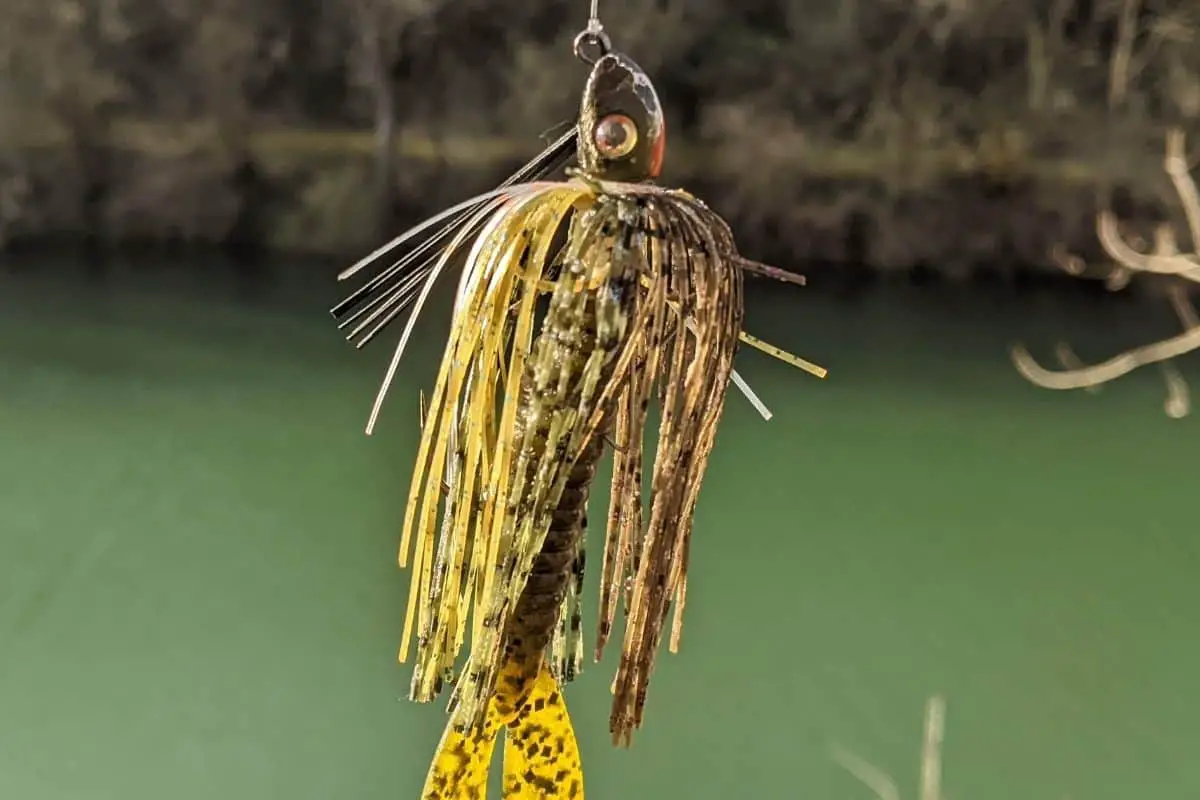Swim jigs catch bass. Period. These lures are much more versatile than most anglers give them credit for.
Swim jigs excel in sparse vegetation, open water, around boat traffic, and places where there are plenty of baitfish. These versatile lures find bass when covering water and deciphering where bass are at.
I first learned how to fish a swim jig on the Mississippi River. It worked so well, I have applied that experience to waters all over the country.
I Use a Swim Jig in Areas Where I Want to Locate Bass
Finding bass may just be what this lure does better than many others.
Because of this characteristic, I use it where I want to determine how the bass are positioned. The nature of the lure and how it is presented get bass to follow and reveal themselves.
This gives an angler a lot of information about how bass are using a particular area.
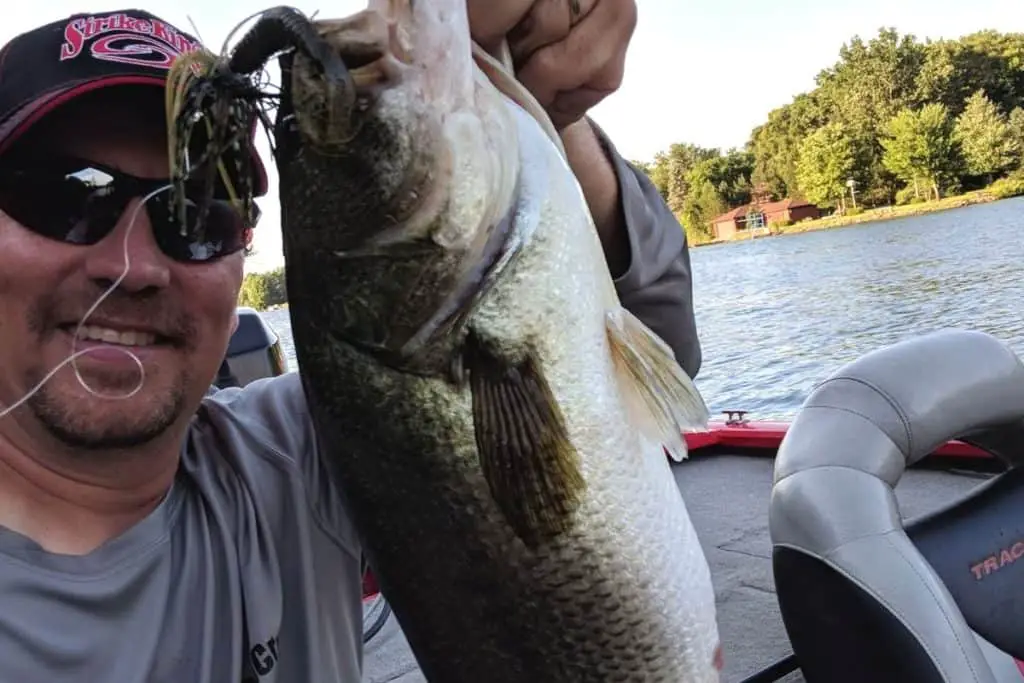
Did the bass come from deeper water? Are they positioned offshore? Were they using vegetation or some other cover like a dock or sea wall?
I can then alter or adjust my swim jig retrieve or try another presentation. For example, if I notice the bass are pulling off a weedbed, I might pick up a lure that works through thick vegetation easier. A Texas-rigged worm would be an example.
(Here is an article on the best line for swim jig fishing.)
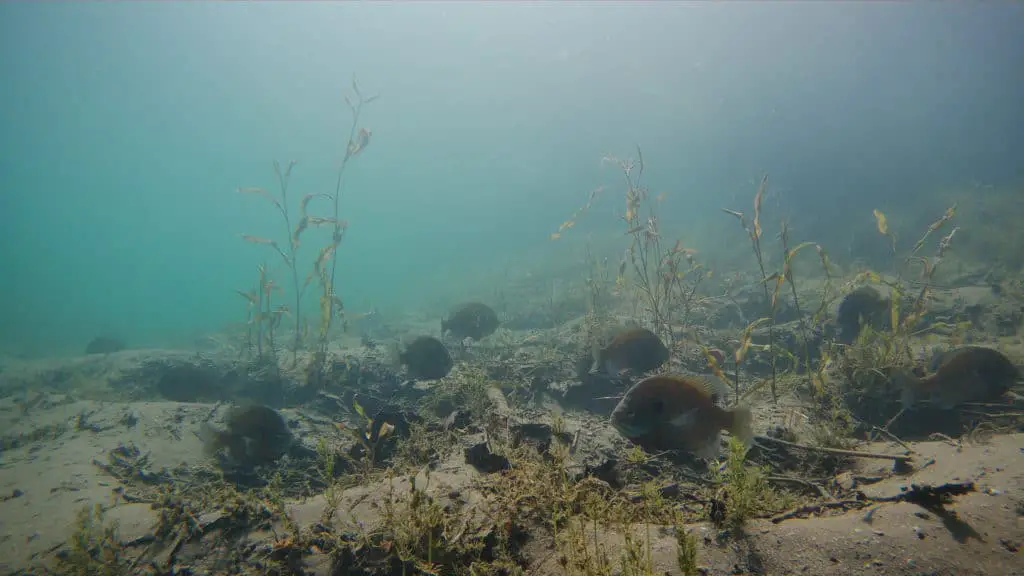
The Swim Jig Mimics a Careless Baitfish and Presents an Easy Meal
This is why this lure is one of the first I always pick up. Especially when figuring out new water.
I love to swim it just like Tom Monsoor describes. He is considered by many to be the best swim jig angler out there. The LaCrosse, WI native has been documented many times describing how he likes to fish the lure with a slow, pulsing retrieve.
In one article I read, he mentioned that he uses the famous Muhammed Ali quote, “Float like a butterfly, sting like a bee.”
He says this while retrieving the lure to help him mentally keep the presentation as slow as possible.
This is how I fish the swim jig 99% of the time and it works – amazingly well.
When bass, or any predator, witness an easy meal it triggers the feeding instincts. A swim jig also has a good profile which translates to a bass identifying that the meal is worth the effort. In other words, the calories gained justify the energy spent to capture the prey.
The slow, wounded-like, retrieve makes the lure easy to track down and eat.
(Here is an article on why jigs catch big bass.)
Boat Traffic and Swim Jigs
Many anglers avoid boat traffic. It can be annoying and dangerous.
Boat traffic also accounts for some amazing catches. The waves and boat wakes stir up the food chain. Microorganisms become dislodged and bounce around. Baitfish take advantage of this and in turn bass put on the feedbag.
I will locate shorelines that are pounded by waves from pleasure boats and tie on a swim jig. The lure is great at covering water and often gets inhaled in these conditions.
Finding pinch-points and funnels where the waves are washing through also provides excellent action for a swim jig. Be careful fishing on days with lots of boat traffic, but enjoy the feeding action it often creates.
Use the Swim Jig Where You Want to Call Fish From a Distance
This too translates to “searching” for bass.
When we work down a shoreline and flip a lure into specific visual targets, the bass are sitting in one spot and we are attempting to drop the lure on that spot.
The swim jig has a tendency to make the bass expand their strike zone.
I fish a lot of clear water and I have witnessed big bass come from the depths and meander right up behind the lure and inhale it. It happens often.
Calling fish from a distance is a benefit when attempting to figure out what is going on. Swim jigs are perfect for this.
They have a similar “calling” power as big swimbaits or glide baits.
(Here are two swim jig articles on how to fish a swim jig and the Alabama Shake.)
Swim Jigs are Great for Sparse Vegetation
Whenever you have a lake or river with grass in it, there is a good chance the swim jig will be a great choice.
By sparse vegetation, I mean grass that is not so packed and matted that a frog is the only real option for fishing it.
If the lure can wiggle through it, then a swim jig can be used.
The slender head design not only works to keep the lure upright while swimming, it also slips through vegetation well.
Bass love to use weeds. Not only does it provide safety for them, but it is also home to lots of baitfish like minnows and panfish.
Find life. Find bass.
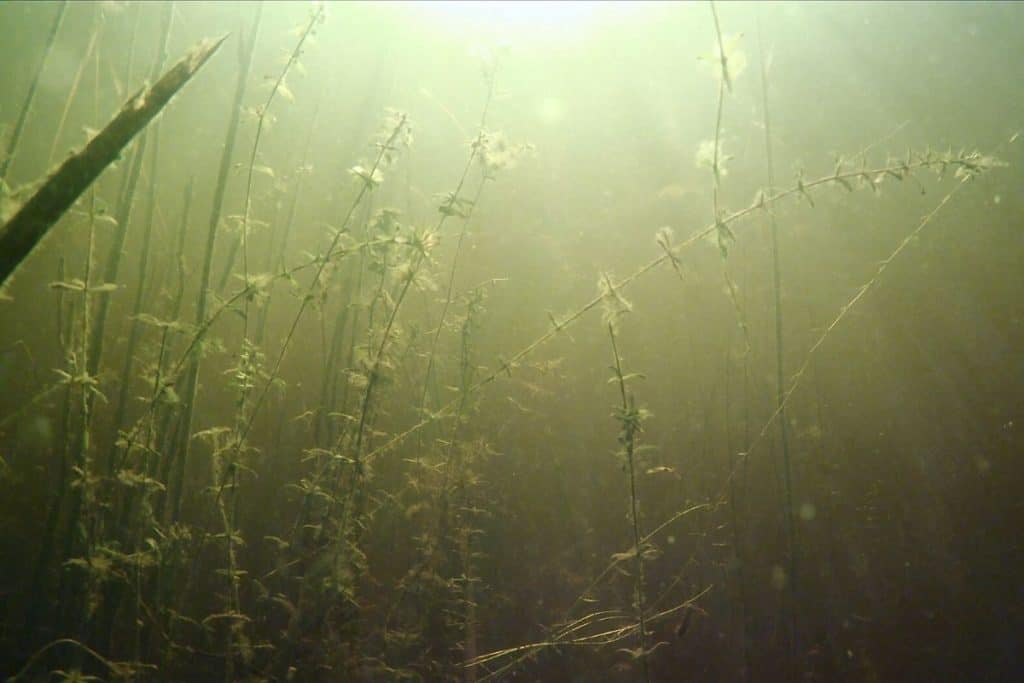
Using Swim Jigs in Open Water
This one takes some getting used to, but it is a powerful way to use and present this lure.
As mentioned earlier, it is very similar in thinking and presentation as big swimbaits and glide baits.
When referring to open water, I mean fishing in areas that are not right along the shoreline. This could be deep water, or it could be water that is only a few feet in depth.
The common factor that makes open water swim jig fishing effective is clarity. The clearer the water the farther the bass can see and target the lure from a distance.
This presentation also works in stained and somewhat dirty water, because it does create a decent vibration signature the bass can locate with their lateral lines. Not vibration as in rattles, but as in water displacement.
Use the Swim Jig Where There are Lots of Panfish
This is probably my favorite situation to use a swim jig.
Yes, the lure is great for mimicking shad and minnows, but there is something about using a bluegill-colored swim jig around panfish that big bass find hard to resist.
I have caught so many plus-sized largemouth this way.
Sunfish present a worthy meal. Bass target these prey species on any water you fish. Big bass will hone in on sunfish more as our favorite game fish grows. Using a lure that imitates this calorie-laden goldmine is an excellent way to focus on larger bass.
It has worked for me many times all throughout the spring, summer, and fall.
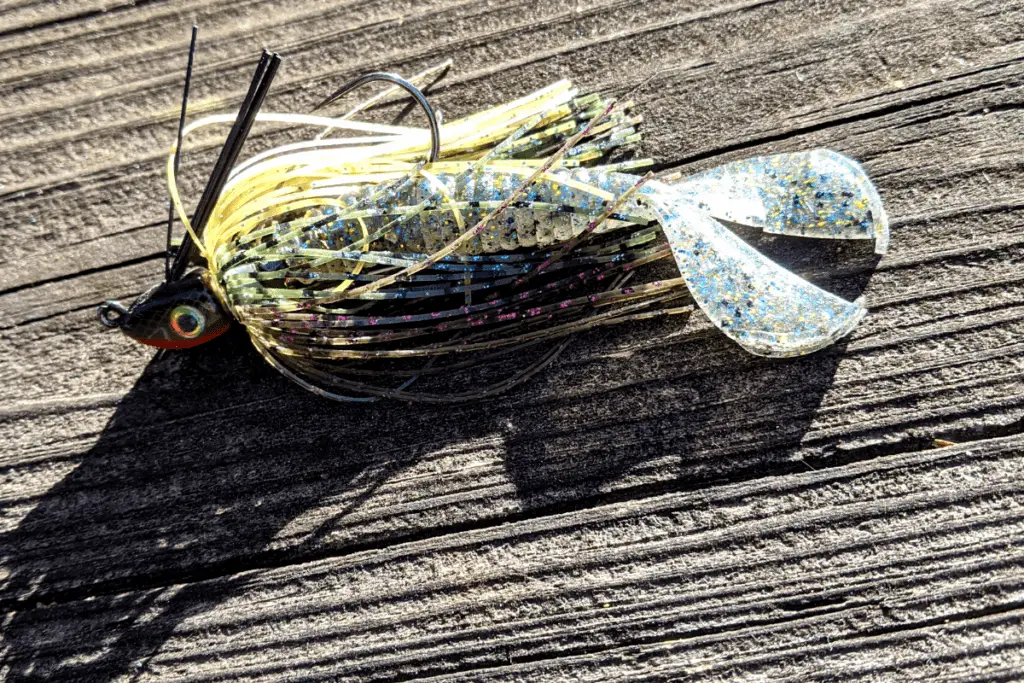
Plastic Trailer Selection for Swim Jigs
I am partial to a twin-tail grub, like the Strike King Rage Menace. I love the swimming action and it resists enough water so I can fish it slowly.
A craw trailer is also a good choice for me. It presents a bigger profile and can trigger bites from quality bass.
Many bass anglers also like to use a paddle tail, or boot tail, swimbait. The Rage swimmer is a good example.
Matching the color pattern of the jig with the trailer is a surefire way to increase the profile and create more water disturbance as you retrieve the lure.
Good luck and make sure to encourage someone today. You never know how you may change their life forever.
Isaiah 6:8

